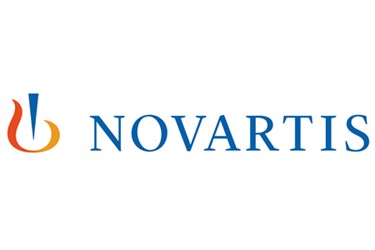Novartis And the Price Of A Child's Life

By Louis Garguilo, Chief Editor, Outsourced Pharma

We’ve been thrust from ruminating around the worth of a generic “human life” towards contemplating starker terms of specific two-year-old children.
Perhaps our existential questioning has reached its crescendo. All of us – not only those face-to-face with the life-and-death of children – need to address this now narrowed existential inquiry:
How much money is a child’s life worth?
This denouement is manifest by the approval of Novartis’ gene-therapy for a devastating infant muscle-wasting disease. That therapy, Zolgensma, is priced at $2.125 million.
We’ve arrived at this point in our biopharma history having ridden a progression of extraordinarily positive developments for the human race:
Drugs and treatments that cure dreadful diseases have reached the market.
However, is this our hoped-for future of gene and cell therapies? The irony of life-saving drugs that financially cancel their celebration at the point of FDA approval?
Started At Sovaldi
I believe the debate actually broke open with the FDA’s approval of Gilead’s Sovaldi, in December of 2013.
At the time, I wrote in an Outsourced Pharma editorial:
“… The one-sided reporting and narrowed focus on the wholesale cost of Sovaldi (Sofosbuvir), a breakthrough drug for the treatment of Hepatitis C, confuses consumers as to price and value within healthcare systems. The instigated hubris is perpetuated by elements of the system itself, national politics, and a lack of interest or understanding in the media of the real story.
“The first measurable value Sovaldi brings is curing patients and vastly improving quality-of-life during treatment. The second value proposition is inherent within the free-market economy creating companies like Gilead Sciences, Inc., that bring us these innovative drugs.
“… Gilead’s Hepatitis C and most all innovator drugs save healthcare systems billions of dollars collectively … Gilead is not bankrupting healthcare as is being widely misreported. It's bankrolling the system …”
Subsequently, I attended an FDA/CMS summit in Washington, D.C., where regarding the uproar over Sovaldi’s pricing, John McHutchison, MD, executive vice president, Clinical Research, Gilead, said:
“We took the previous difficult available therapy that was a much higher cost, didn't charge a premium for our drug that had a higher efficacy and lower side effects. Everything that happened in the press … I mean, you were seeing people go through [liver] transplantations or die before transplantation. For these patients with the disease, it’s all a distraction and disappointment. It [Sovaldi treatment] is a cure. It’s only twelve weeks long, now once a day. It's highly effective in more than 95 percent of patients, and the long-term costs of caring for those people with advanced liver disease will be offset by the costs initially. Yes, I think it is a distraction, it’s disappointing, and it raises larger issues.”
One difference I recognize this time around with Novartis’s Zolgensma is that the price uproar was initially more patient-directed.
Forget the health-care system for a moment: With Zolgensma, we seem to incur a stronger sense a drug company is telling parents that to save their two-year-old, they need to come up with $2 million. It seems more personal now.
Payers In And Patients Out Of Sight
Nonetheless, The Wall Street Journal, for example, still reported from the system-centric viewpoint:
“Gene therapies promise the chance to cure diseases whose diagnoses were death sentences, but the prices for the first few to be greenlighted raise concerns about whether they can be afforded by governments and health insurers that have been struggling to control health spending.” (italics mine)
The WSJ goes on: “To allay concerns over the cost, Novartis said it would offer insurers the option to pay for the treatment in equal, annual installments over five years. The company also pledged to issue partial refunds if the treatment doesn’t work.
“Novartis also defended the overall price by comparing it to a treatment already on the market. David Lennon, head of Novartis’s AveXi’s unit that developed Zolgensma, said in a call with reporters it would cost half that of the current standard treatment, Spinraza [Biogen], over a 10-year period.
“… Dr. Lennon also pointed to a revised cost-effectiveness analysis by the independent nonprofit Institute for Clinical and Economic Review [ICER], which said the treatment could justify a price tag of up to $2.1 million.”
Of course the WSJ wrote about what this means for those with spinal muscular atrophy, “the most common genetic cause of death in infants.”
But it gets back to payment and the “system” immediately, quoting Michael Sherman, chief medical officer of health plan Harvard Pilgrim Health Care, who declares the price “fair.”
“We’re comfortable that it’s within the pricing we would deem appropriate,” Dr. Sherman said, referring to an updated ICER analysis.
Sherman also mentioned cutting a deal with Novartis “to get some money back if Zolgensma proves ineffective.” However, these “value-based agreements” have to obey certain pricing rules of the Medicaid health-insurance program for pediatric drugs.
“To get around the roadblock,” writes the WSJ, “Novartis will get paid in full upfront by a middleman, the specialty pharmacy Accredo owned by Cigna, which will then manage the installment payments.”
Time Will Tell
Maybe we should be glad Novartis has figured out how to get its price. And the health care “system” cut its deals – for example, the long-term results of the therapy are still to be determined.
This is, after all, the price of innovation. Of human discovery and scientific research, of modern techniques, advanced instrumentation, and applied ingenuity. And of enough profit to do it all again to cure another disease.
It’s just unfortunate how that price – along with it the price of human life – is so influenced by a complicated, middleman-heavy and opaque “system.”
So the national discourse needs to continue.
In the meantime, great hope for parents, and bright futures for their children, have been resurrected by the folks at Novartis.
To those families, you might say, the system can still be priceless.
